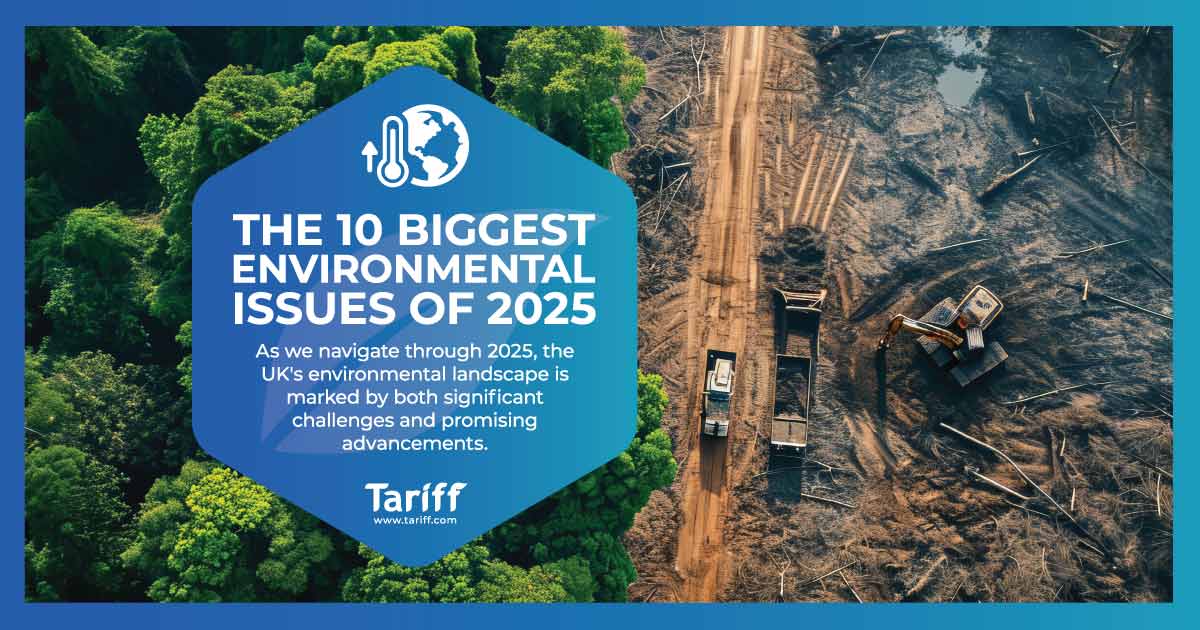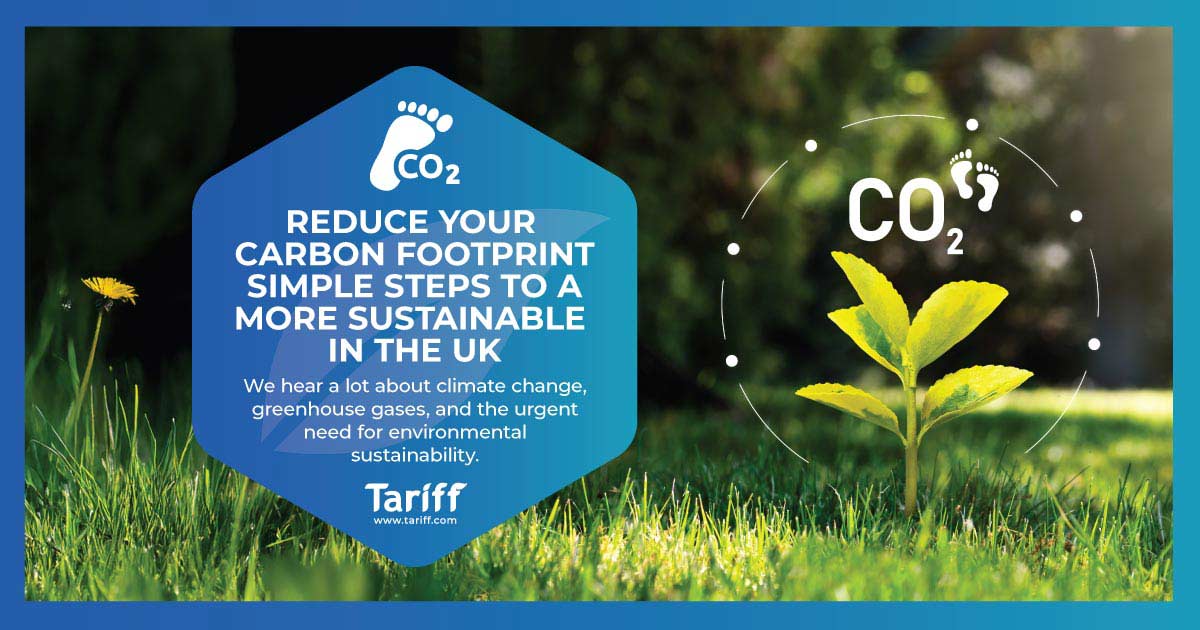Simple Steps to a More Sustainable Lifestyle in the UK
We hear a lot about climate change, greenhouse gases, and the urgent need for environmental sustainability. But what does it really mean for us, day-to-day, living in the UK? One key concept is our “carbon footprint” – the total amount of greenhouse gases (including carbon dioxide and methane) generated by our actions.
From the energy we use to heat our homes to the food we eat and the way we travel, almost everything we do contributes to this footprint. The good news? Reducing it doesn’t necessarily mean drastic upheaval. By adopting a more sustainable living approach and making conscious choices, we can collectively make a significant positive impact on our planet. Plus, many steps towards an eco-friendly lifestyle can also save you money – particularly on your energy bills!
This guide provides practical tips and advice to help you reduce your carbon footprint through simple, actionable steps. Let’s explore how you can make your home and habits greener.
Tackling Energy Consumption at Home
Our homes are often the biggest contributors to our personal carbon footprints, primarily through heating and electricity usage. Implementing energy conservation tips is one of the most effective ways to make a difference.
Switch to a Greener Energy Tariff:
- One of the most impactful changes you can make is switching to an energy supplier that provides electricity from 100% renewable sources like wind, solar, or hydro.
- Compare green energy tariffs from various UK suppliers and find the best deal for your needs. Choosing a green tariff directly supports the renewable energy industry and significantly cuts the carbon emissions associated with your electricity use.
Boost Your Home’s Insulation:
- A poorly insulated home loses heat rapidly, meaning your heating system works harder (and uses more energy) to maintain a comfortable temperature.
- Loft Insulation: Ensure you have the recommended depth (currently 270mm). It’s often a cost-effective measure with quick payback.
- Cavity Wall Insulation: If your home was built between the 1920s and 1990s, it likely has cavity walls that can be filled.
- Draught-Proofing: Seal gaps around windows, doors, letterboxes, and chimneys. This is a cheap and easy DIY job that makes a noticeable difference.
- Check out the Energy Saving Trust for detailed guidance on home insulation options and potential grants available in the UK.
Embrace Energy-Efficient Appliances:
- When replacing old appliances (fridges, washing machines, dishwashers), look for models with high energy efficiency ratings (A is best under the newer scale). While potentially costing more upfront, they use significantly less electricity over their lifetime.
- Don’t forget smaller items! Use an eco-kettle that boils only the water you need, and choose energy-saving settings on devices where available.
Be Smart About Heating:
- Turn down the thermostat: Lowering your thermostat by just 1°C can cut your heating bills and carbon footprint. Wear a jumper instead!
- Smart Thermostats: These devices learn your habits and allow you to control your heating remotely, ensuring you only heat your home when necessary. Many can also optimise heating schedules for efficiency.
- Thermostatic Radiator Valves (TRVs): Install TRVs on your radiators to control the temperature in individual rooms.
Switch to LED Lighting:
- LED bulbs use up to 80-90% less energy than traditional incandescent bulbs and last much longer. Replace your bulbs as they expire, starting with the most frequently used ones.
Vanquish Vampire Drain:
- Many electronic devices consume power even when switched off (standby mode). This “vampire drain” adds up. Turn appliances off at the wall socket when not in use, or use smart plugs that can be timed or switched off remotely.
Wash Wisely:
- Wash clothes at 30°C instead of higher temperatures whenever possible – modern detergents are very effective at lower temperatures.
- Always aim for a full load in both your washing machine and dishwasher.
- Air dry clothes instead of using a tumble dryer, especially during warmer months. Tumble dryers are notoriously energy-hungry.
Conserving Water
It’s easy to forget that the clean water arriving in our homes requires significant energy for treatment and pumping, contributing indirectly to carbon emissions.
Therefore, saving water is not just about preserving a precious resource; it also reduces the energy demand associated with its supply.
Simple changes in habits can make a real difference. Consider cutting down shower times – aiming for just 4 or 5 minutes can substantially reduce water and heating energy use; a shower timer can be a helpful reminder.
Fitting water-efficient devices like low-flow showerheads and tap aerators is another effective strategy, often reducing consumption without a noticeable drop in pressure. Don’t underestimate the impact of small drips; fixing leaky taps promptly prevents litres of wasted water each day.
Developing mindful habits, such as turning off the tap while brushing your teeth or washing vegetables, also contributes significantly.
For garden enthusiasts, installing a water butt to collect rainwater provides a free and sustainable source for watering plants, lessening reliance on treated tap water.
Rethink Your Rubbish
Every item we purchase carries an invisible environmental cost, encompassing the energy and resources used in its production, transportation, and eventual disposal. This contributes significantly to our overall carbon footprint. Therefore, actively reducing the amount of waste we generate is a cornerstone of adopting a more sustainable living approach. A helpful framework for this is the concept of the “5 Rs”.
It starts with Refuse – consciously saying no to things we simply don’t need, such as free promotional items or ubiquitous single-use plastics like straws and carrier bags. Following closely is Reduce, which involves buying less overall and making smarter choices when we do shop. Opting for products with minimal packaging, choosing loose fruit and vegetables instead of pre-packaged ones, and careful meal planning to minimise food waste are all practical ways to reduce consumption at the source.
Next comes Reuse. This principle encourages us to favour items designed for multiple uses, like reusable water bottles, coffee cups, and shopping bags, over their disposable counterparts. It also champions repairing items rather than immediately replacing them and finding imaginative new uses for things we might otherwise discard. This flows naturally into Repurpose, where creativity comes into play – old jam jars can become handy storage containers, and worn-out clothing can be cut up for cleaning rags, giving items a second life.
Finally, Recycle remains a vital step for materials that cannot be refused, reduced, or reused. It’s crucial to understand and follow your local council’s specific recycling guidelines to ensure materials are processed correctly – rinsing containers can prevent contamination of a whole batch.
For those with garden space or even a balcony, composting offers a fantastic way to deal with organic waste like vegetable peelings, tea bags, and coffee grounds. This process diverts waste from landfill, where it would produce harmful methane gas, and instead creates valuable, nutrient-rich compost for your plants.
Sustainable Transport Choices
In the UK, the transport sector stands as a major contributor to greenhouse gas emissions. Consequently, rethinking how we move from place to place presents a significant opportunity to reduce carbon footprint. Shifting towards more sustainable modes of travel can make a substantial difference.
For shorter journeys, embracing active travel by choosing to walk or cycle is the ideal solution. It’s entirely free, offers considerable health benefits, and produces zero emissions. When distances are greater, utilising public transport, such as trains and buses, is generally a far greener choice than driving alone, as these options have a much lower carbon footprint per passenger mile.
When driving is the most practical option, consider car sharing or carpooling with colleagues, friends, or neighbours heading in the same direction. This simple step effectively reduces the number of vehicles on the road. If you are driving your own vehicle, adopting efficient driving habits helps minimise fuel consumption and emissions. This includes ensuring your car is well-maintained with correctly inflated tyres, accelerating and braking smoothly, avoiding carrying unnecessary weight, and planning your journeys to combine multiple errands into a single trip.
Looking towards the future of personal transport, Electric Vehicles (EVs) offer a compelling alternative. EVs produce no tailpipe emissions, and when charged using electricity generated from renewable sources (linking back to choosing a green energy tariff), their overall environmental sustainability impact is dramatically lower than conventional petrol or diesel cars. With government grants often available and the charging infrastructure continually improving, EVs are becoming an increasingly accessible option for UK drivers committed to reducing their environmental impact.
Shop Smart, Eat Green
Our purchasing decisions, especially regarding food, have a substantial environmental impact.
Buy Local & Seasonal: Food transported long distances has a higher carbon footprint. Support local farmers and enjoy produce when it’s naturally in season in the UK.
Reduce Food Waste: Plan meals, write shopping lists, store food correctly, and use leftovers creatively. Wasting food means wasting the resources (land, water, energy) used to produce it.
Choose Sustainable Products: Look for items made from recycled materials or sustainable sources (e.g., FSC-certified wood). Support brands committed to environmental sustainability.
Buy Second-Hand: From clothes to furniture, buying pre-loved items reduces the demand for new manufacturing and prevents usable goods from going to landfill. Making the Connection: Sustainability and Savings
Reducing energy consumption directly lowers your utility bills. Conserving water can reduce your water bill (especially if you’re on a meter). Minimising waste can cut down on shopping costs.
This is where Tariff.com can help you take a significant step. Ensuring you’re on the right energy tariff – ideally a green one – is fundamental to reducing both your carbon footprint and your energy expenditure.
Start Your Sustainable Journey Today
Reducing your carbon footprint might seem like a daunting task, but it’s about progress, not perfection. Start with a few changes that feel manageable for you and build from there. Every small step – switching off a light, recycling properly, choosing a greener energy plan – contributes to a larger collective effort towards environmental sustainability.
By embracing these sustainable living practices, you’re not just helping the planet; you’re often improving your health, supporting local communities, and potentially saving money.
Take the first step towards a greener home energy plan today.
Contact our team of experts today to compare energy deals, find green tariffs, and take control of your energy consumption and costs.




